 "QUANTUM SHOT" #282 "QUANTUM SHOT" #282Link Next Best Thing to Walking on Water Driving your car on your local river may seem unnecessary, unless you want to avoid your usual traffic jams, or to take out your girlfriend on a river cruise with a backseat. Our "Future Tech" contributing writer Paul Schilperoord, whose recent book on "exciting innovations in transportation" you can order here, compiled an overview of great amphibious cars (available today!) that just might inspire you to cut short your motoring on land and venture out into the water. Amphibious Cars Amphibious cars have been around for many decades. In fact, the American inventor Oliver Evans built the first self-propelled amphibious vehicle as early as 1805. His design consisted of a wooden hull fitted with a steam engine and wheels. But it wasn’t until well into the twentieth century that amphibian vehicles found their use, mainly for military applications. The first and only mass-produced amphibian car for the consumer market was the German Amphicar, which was produced from 1961 to 1968. Cars such as the Amphicar and later successors were only capable of low speeds in water, in the case of the Amphicar around 11 kilometres per hour (7 mph) in the water and 113 kilometres per hour (70 mph) on land:   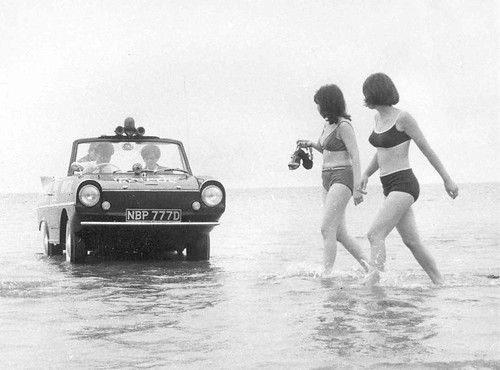 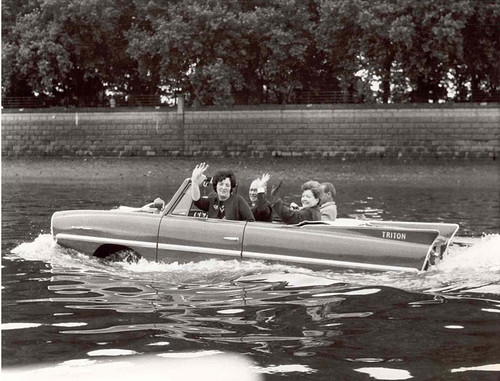 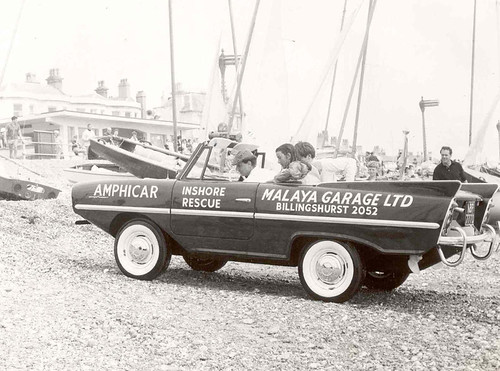 (images credit: John Bevins, The International Amphicar Club) In recent years a couple of amphibian cars were created using modern technology to reach much higher speeds. 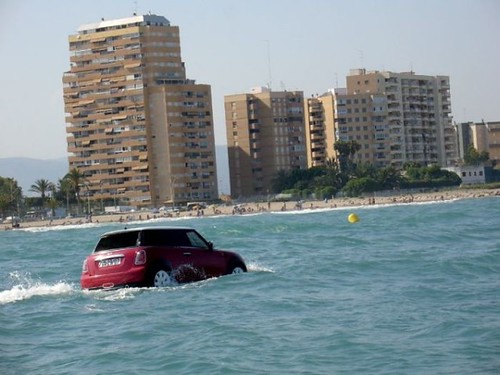 These include the Aquada from the British company Gibbs Technologies, capable of 160 kilometres per hour (100 mph) on land and 55 kilometres per hour (30 mph) in water. Another high-speed amphibian is the Rinspeed Splash which utilizes hydrofoil technology, allowing the body to be raised out of the water. Using hydrofoils this vehicle can reach 80 kilometres per hour (50 mph) on the water and as a sports car 200 kilometres per hour (125 mph) on the road. AQUADA: High-Speed Amphibian Car The Aquada is the fastest amphibian vehicle ever built, equipped with HSA (High Speed Amphibian) technology from the British company Gibbs Technologies (in production since 2003). On the road, the Aquada handles like a sports car, capable of a maximum speed of 160 kilometres per hour (100 mph). The vehicle is equipped with a mid-mounted V6 petrol engine, which drives the rear wheels.   For conversion to a speed boat, the Aquada can simply be driven into the water from a ramp. 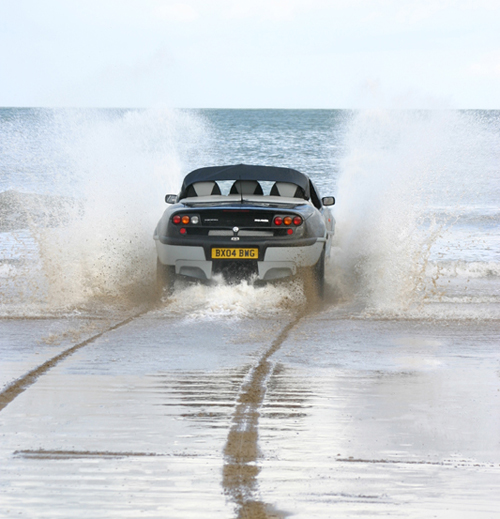 Once the vehicle reaches deep enough water, the computer controlled hydro-pneumatic suspension unit collapses all four wheels upwards into the wheel cases.  The engine is directly coupled to a waterjet, capable to propel the vehicle up to a maximum speed of 55 kilometres per hour (30 mph). For optimum performance, the underside of the Aquada is fully streamlined while the waterjet is completely integrated into the vehicle body with no protruding parts. 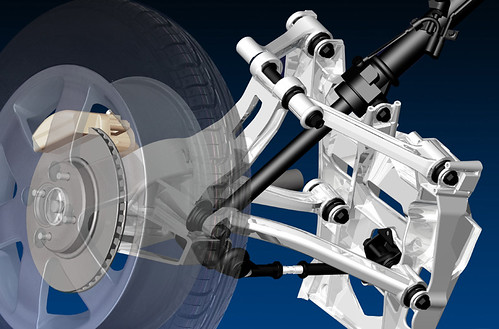 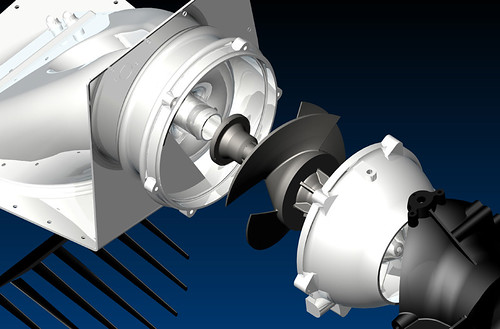 (images courtesy Gibbs Technologies) Transformation from car to boat takes just 6 seconds. On the road, a dual sensor system and additional magnetic locks prevent the wheels from collapsing into the wheel cases. The driver sits in the middle of the car, with a passenger seat at either side. Seats can be elevated for improved visibility on water. The Aquada is the first application of the HAS technology. This amphibious drive system can be transferred to vehicles of all sizes and a great number of applications. Gibbs Technologies aims to license the technology to higher volume manufacturers to make the technology more widely available. TECHNICAL SPECIFICATIONS: PROPULSION SYSTEM Direct rear-wheel drive + waterjet ENGINE: 2,500 cc V6 petrol engine POWER OUTPUT: 130 kW (175 hp) ACCELERATION 0-96 KM/H (60 MPH): 10 sec. MAXIMUM SPEED: Land: 160 km/h (100 mph) Water: 55 km/h (30 mph) RINSPEED SPLASH: Hydroplaning Car The Rinspeed "Splash" is a unique amphibian sports car with hydroplaning abilities.   On the road the vehicle is capable of a maximum speed of 200 kilometres per hour (125 mph). To use it as an amphibian, the driver simply drives the vehicle into the water and at the push of a button, a hydraulic mechanism transforms the sports car into an amphibious vehicle. 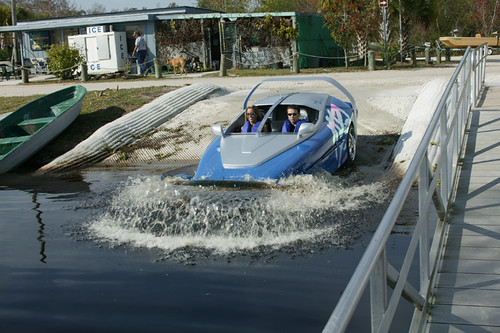 First the rear panel of the vehicle flips up to reveal a Z-drive, adapted from a watercraft, resting in horizontal position. The Z-drive has a three-bladed propeller and can be lowered into the water. It can reach its fully standing vertical position in a water depth of about 1.1 metres (3.6 ft). 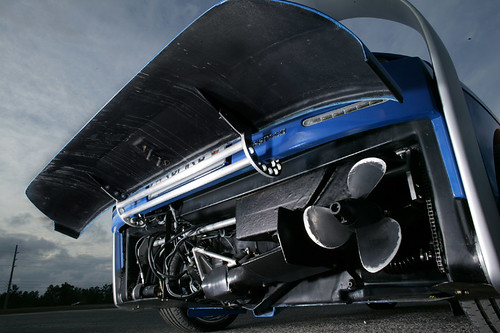 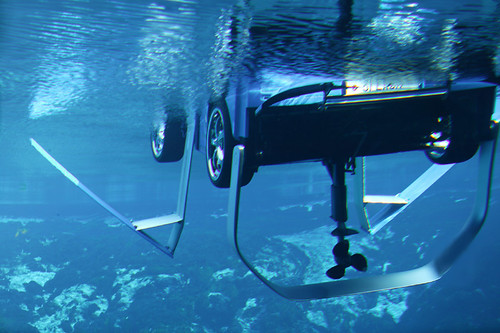 The Splash is powered by a 750 cc engine running on natural gas. Engine power is sent to the rear wheels, the propeller or both, depending on the required propulsion to further enter the water. Steering commands from the steering wheel are transferred to the Z-drive. 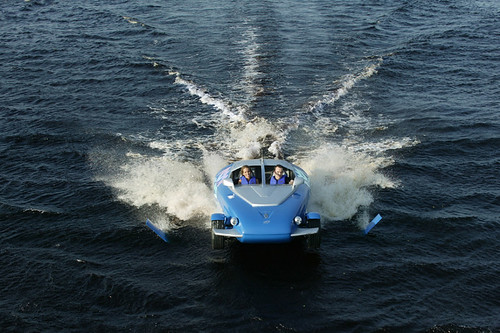 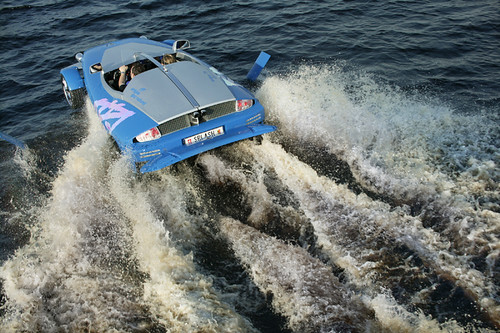 At a minimum water depth of 1.3 meters (4.3 ft) a system of integrated hydrofoils can be lowered into the water. At the rear of the vehicle the large spoiler rotates 180 degrees downwards until it standing underneath the body. At the lift and right hand side of the cockpit two hydrofoils rotate 90 degrees downwards and unfold into a V-shape. Under normal driving conditions these hydrofoils are folded down against both sides of the vehicle. Even at slow speeds the hydrofoils start to lift the Splash out of the water. It reaches its fully suspended position from speeds around 30 kilometres per hour (19 mph), "flying" approximately 60 centimetres (2 ft) above the water surface. With retracted hydrofoils the Splash can also be operated as a "conventional" amphibian with speeds up to 50 kilometres per hour (30 mph). 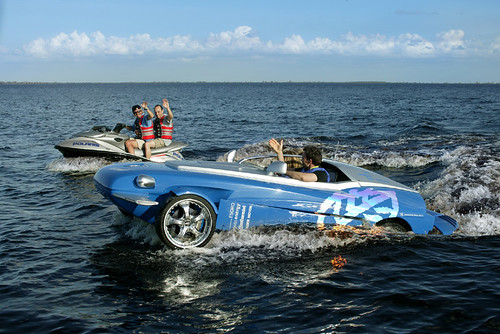 (images courtesy Rinspeed) TECHNICAL SPECIFICATIONS DRIVE SYSTEM: Direct drive + Z-drive ENGINE: Petrol engine POWER OUTPUT: 140 HP (103 kW) @ 7,000 rpm ACCELERATION 0 – 100 KM/H (62 MPH): 5.9 sec. MAXIMUM SPEED (LAND) 200 km/h (125 mph) MAXIMUM SPEED (WATER) Hydrofoil: 80 km/h (50 mph) Retracted hydrofoils: 50 km/h (30 mph) Article by Paul Schilperoord, Octopus Design for Dark Roasted Blend. ------- One our addition to this article is the "retro-future" Amphibious Monorail that we spotted on this wonderful site: 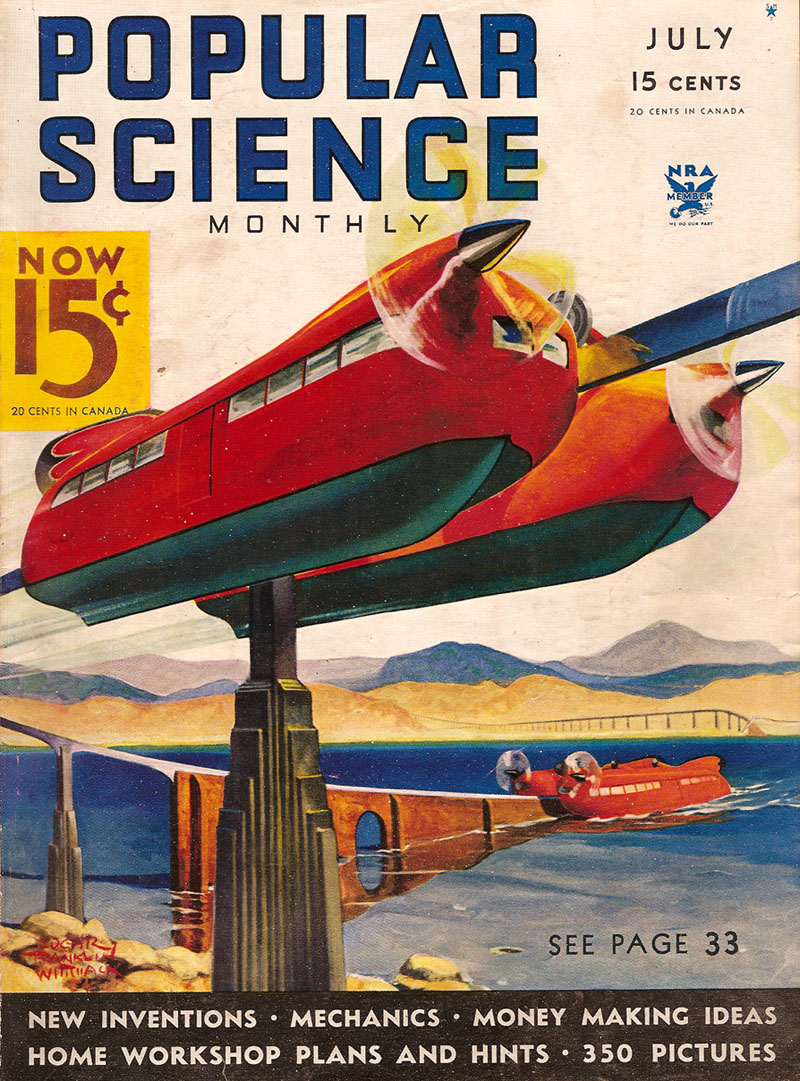 Cover of "Popular Science", July 1934 Designed to traverse the deserts of Turkmenistan (and to bring economic development to the area rich in natural resources), this Soviet "dream train" would turn into a boat for the independent crossing of major rivers. This project is so deliriously bizarre, that no retro-tech enthusiast can fail to get excited by it, for no apparent practical reason. 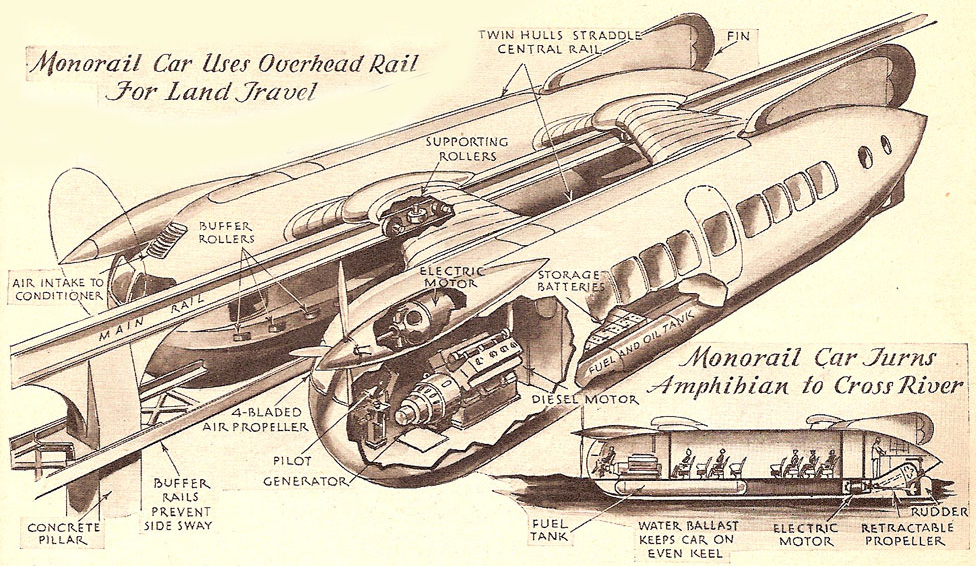 This "boat-train" idea may seem a little far-fetched, until you consider the projected link between Siberia and Alaska: a fleet of amphibious transport vehicles could be a viable alternative to building a costly tunnel. -------- UPDATE on October 29, 2007: We've learned about the "Water Car" manufacturer, which makes an amphibious vehicle with the best looks of all: After all, this is a 2002 Convertible Camaro. 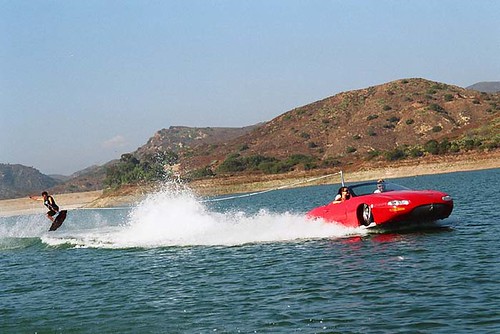 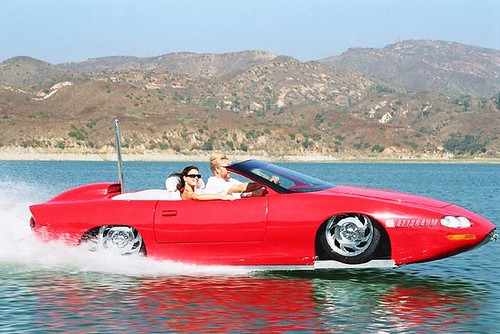 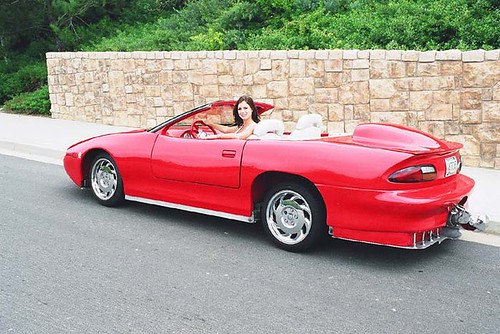  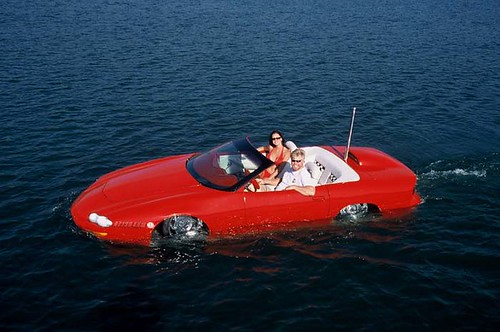 (images credit: Water Car) From the same company comes this truly off-roading Jeep "Gator" version: 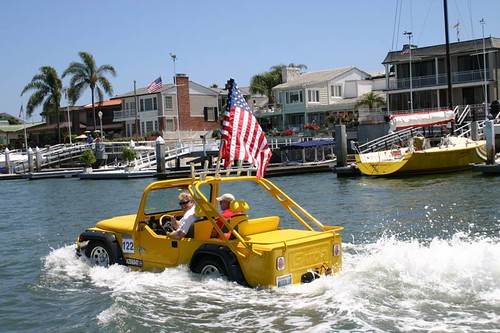  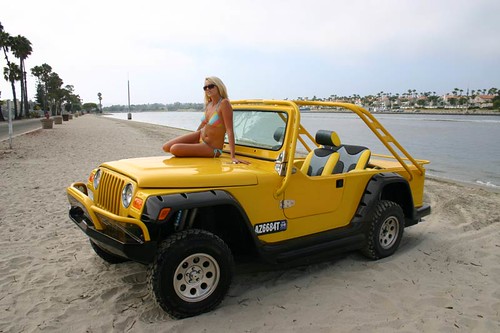 (images credit: Jeep Gator) Permanent Link... Category: Technology,Auto Related Posts: Airplane House & Boat Conversions New Hydrofoil & Submersible Concepts |
RECENT ARTICLES:

|
Visual Caffeine #8 Visual Caffeine, Issue 8 A thrilling blend of art, myths and technology |

|
Visual Caffeine #7 Visual Caffeine, Issue 7 A thrilling blend of art, myths and technology |

|
Art Deco Imperial Dreams: Art Deco Update Wings, Gears, & Glamorous Ladies |

|
1970s SciFi DRB Pics-of-the-Day Grand Space Adventure 1970s Art |
"Dark Roasted Blend" - All Kinds of Weird and Wonderful Things, Discovered Daily!"
DRB is a top-ranked and respected source for the best in art, travel and fascinating technology, with a highly eclectic presentation. Our in-depth articles in many categories make DRB a valued online magazine, bringing you quality info and entertainment every time you visit the site - About DRB
Connect with us and become part of DRB on Facebook and Twitter.
YOUR COMMENTS::
|
|
|
|
SF ART & BOOK REVIEWS: Don't miss: The Ultimate Guide to NEW SF&F Writers! Fiction Reviews: Classic Cyberpunk: Extreme Fiction Short Fiction Reviews: Lovecraft's "At the Mountains of Madness" (with pics) New Fiction Reviews: The Surreal Office |
READ OTHER RECENT ARTICLES:

|
Abandoned, Dieselpunk DRB Pic-of-the-Day Abandoned: Streamlined Three-wheeler |

|
Visual Caffeine #6 Visual Caffeine, Issue 6 A thrilling blend of art, myths and technology |

|
Visual Caffeine #5 Visual Caffeine, Issue 5 A thrilling blend of art, myths and technology |

|
Hellish Weather on Other Planets
Wild, Untamed, and Uncut |

|
Medieval Suits of Armor
Metal Body Suits vs. Weapons of Medieval Destruction |

|
World's Strangest Theme Parks
Amusement to the (twisted) extremes! |

|
Enchanting Victorian Fairy Tale Art
"Then world behind and home ahead..." |

|
Adorable Pedal Cars
Collectable Pedal Vehicles Showcase |

|
Japanese Arcades: Gundam Pods & Other Guilty Pleasures These machines have gone up to the next level |

|
Modernist Tallinn Architecture Delicious blend of old and new! |

|
Early Supercomputers: A Visual Overview "Computers in the future may weigh no more than 1.5 tons" |

|
Futuristic Concept Cars of the 1970-80s French, Italian & Japanese rare beauties |

|
Epic 1970s French Space Comic Art DRB Time-Slice: Valérian and Laureline |

|
The Trees Are Escaping! The Abandoned Prison in French Guiana "Great Escape" from the Devil's Island |
|
FULL ARCHIVES (with previews, fast loading): 2022/16 2015/14 2013 2012 2011 2010 2009 2008 2007 2006 Link Lattes Feel-Good & Biscotti Issues |
|
CATEGORIES:
Feel-Good! | airplanes | animals | architecture | art | auto | boats | books | cool ads | famous | futurism | food
gadgets | health | japan | internet | link latte | military | music | nature | photo | russia | steampunk
sci-fi & fantasy | signs | space | technology | trains | travel | vintage | weird | abandoned













































3 Comments:
How about the German WWII Schwimmwagen?
http://en.wikipedia.org/wiki/Volkswagen_Schwimmwagen
this is much better then all those
http://watercar.com/
and LuAZ 967M
Post a Comment
<< Home